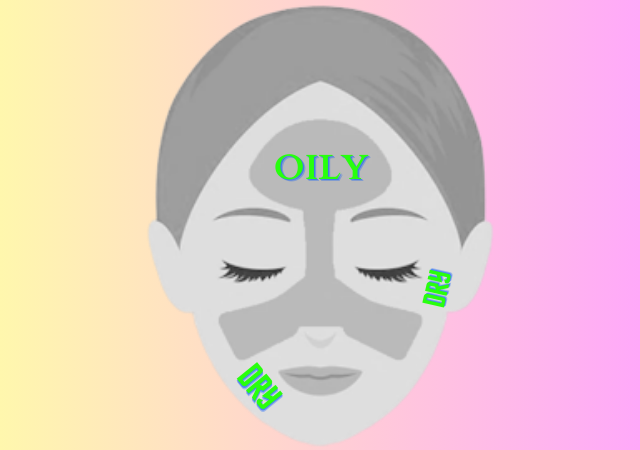How to clean up sensitive combination skin
Introduction
Struggling with sensitive combination skin can feel like a never-ending battle, but fear not—help is here! This article is your guide to mastering the art of cleansing for sensitive combination skin, without the added stress.
We’ll delve into the basics first, understanding what exactly combination skin entails and why it’s so sensitive. Then, armed with this knowledge, we’ll explore the world of gentle cleansers and skincare routines designed specifically for your unique skin type. From identifying the right products to mastering the perfect cleansing technique, we’ve got you covered.
So, whether you’re tired of your T-zone shining brighter than a disco ball or dealing with pesky dry patches that just won’t quit, stick with us. Say goodbye to skin woes and hello to a fresh, radiant complexion!
Understanding Sensitive Combination Skin

Before we dive into the nitty-gritty of cleansing, let’s take a moment to understand what exactly sensitive combination skin is all about. Combination skin is characterized by having both oily and dry areas on the face. The T-zone (forehead, nose, and chin) tends to be oilier, while the cheeks may be dry or normal. On top of that, if you have sensitive skin, you’re more prone to reactions like redness, itching, or irritation when exposed to certain products or environmental factors.
Identifying Suitable Cleansing Products
Choosing the right cleanser is crucial when you have sensitive combination skin. Look for products that are gentle, fragrance-free, and formulated specifically for sensitive skin. Avoid harsh ingredients like alcohol, sulfates, and artificial fragrances, as these can strip the skin of its natural oils and cause irritation.
Gel-based or foaming cleansers are ideal for removing excess oil and dirt from the T-zone without drying out the skin. Cream-based cleansers, on the other hand, are more hydrating and can help soothe dry or sensitive areas on the cheeks. Experiment with different cleansers to find what works best for your skin.
Building a Cleansing Routine
Consistency is key when it comes to cleansing sensitive combination skin. Aim to cleanse your face twice a day, in the morning and evening, to remove dirt, oil, and impurities that can clog pores and lead to breakouts. Start by removing any makeup or sunscreen with a gentle micellar water or oil-based cleanser.
Next, apply a small amount of your chosen cleanser to damp skin and gently massage it in using circular motions. Pay extra attention to areas that tend to be oilier, like the forehead, nose, and chin, but be gentle to avoid irritating sensitive areas. Rinse thoroughly with lukewarm water and pat your skin dry with a soft towel.
Tips for Effective Cleansing
In addition to choosing the right products and following a consistent cleansing routine, there are a few tips and tricks that can help maximize the effectiveness of your skincare routine:
- Use lukewarm water: Hot water can strip the skin of its natural oils and exacerbate dryness and sensitivity. Opt for lukewarm water instead to cleanse your skin without causing irritation.
- Avoid harsh scrubbing: While it may be tempting to scrub away oil and impurities, aggressive scrubbing can actually damage the skin barrier and worsen sensitivity. Instead, use gentle, circular motions when cleansing, and avoid abrasive scrubbing tools.
- Pat, don’t rub: After cleansing, resist the urge to rub your skin dry with a towel. Instead, gently pat your skin dry to avoid causing friction and irritation.
- Follow up with moisturizer: Immediately after cleansing, apply a lightweight, non-comedogenic moisturizer to hydrate and protect your skin. Look for products that contain soothing ingredients like hyaluronic acid, ceramides, and niacinamide.
Additional Skincare Considerations
In addition to cleansing, there are a few other skincare steps that can help keep sensitive combination skin in check:
- Use a toner: After cleansing, apply a gentle toner to help balance the skin’s pH levels and remove any remaining traces of dirt or makeup. Look for alcohol-free formulas with hydrating ingredients like rosewater or witch hazel.
- Incorporate weekly exfoliation: Exfoliation can help remove dead skin cells and unclog pores, but it’s important to choose gentle exfoliants that won’t irritate sensitive skin. Opt for chemical exfoliants like alpha hydroxy acids (AHAs) or beta hydroxy acids (BHAs), and limit exfoliation to once or twice a week to avoid overdoing it.
- Protect your skin from the sun: Sun exposure can worsen sensitivity and exacerbate skin conditions like rosacea and eczema. Always wear a broad-spectrum sunscreen with an SPF of 30 or higher, and reapply every two hours when spending time outdoors.
Lifestyle Factors and Skincare Habits
In addition to your skincare routine, certain lifestyle factors and habits can also affect the health and appearance of your skin:
- Stay hydrated: Drinking plenty of water is essential for maintaining healthy, hydrated skin. Aim to drink at least eight glasses of water a day, and limit your intake of dehydrating beverages like alcohol and caffeine.
- Eat a balanced diet: A diet rich in fruits, vegetables, lean proteins, and healthy fats can help support overall skin health. Avoiding processed foods, sugary snacks, and excessive caffeine can also help reduce inflammation and improve skin quality.
- Manage stress: Stress can wreak havoc on your skin, triggering flare-ups of acne, eczema, and other skin conditions. Practice stress-reducing techniques like deep breathing, meditation, yoga, or spending time outdoors to help keep stress levels in check.
Seeking Professional Advice
If you’re struggling to manage sensitive combination skin on your own, don’t hesitate to seek professional advice. A dermatologist or skincare professional can assess your skin’s needs and recommend personalized treatment options tailored to your specific concerns.
Additionally, if you experience any adverse reactions or persistent skin issues, such as redness, itching, or inflammation, it’s important to consult a healthcare professional as soon as possible. These could be signs of an underlying skin condition that requires medical attention.
Conclusion (How to clean up sensitive combination skin)
Cleansing sensitive combination skin isn’t about finding a magic solution—it’s about discovering what works best for you, one step at a time. By handpicking products that speak to your skin’s needs, sticking to a gentle skincare routine like a trusty compass, and weaving in healthy lifestyle habits, you’re not just tending to your skin – you’re nurturing your confidence, too.
It’s crucial to remember that skincare isn’t a one-size-fits-all endeavor. What works wonders for one person may not have the same effect for another. So, don’t be afraid to embark on a journey of experimentation, trying out different products and techniques until you find the perfect fit for your skin.

My name is Rohit Vagh and I’m a content writer specializing in fashion and lifestyle. I have three years of experience in this field and have written various articles. My writing style is creative and engaging, and I strive to create content that resonates with my readers. I have a deep passion for fashion and am constantly researching the latest trends and styles to make sure my readers are up to date. I’m excited to continue my career in blogging, and I’m always looking for new opportunities in the fashion and lifestyle space.





